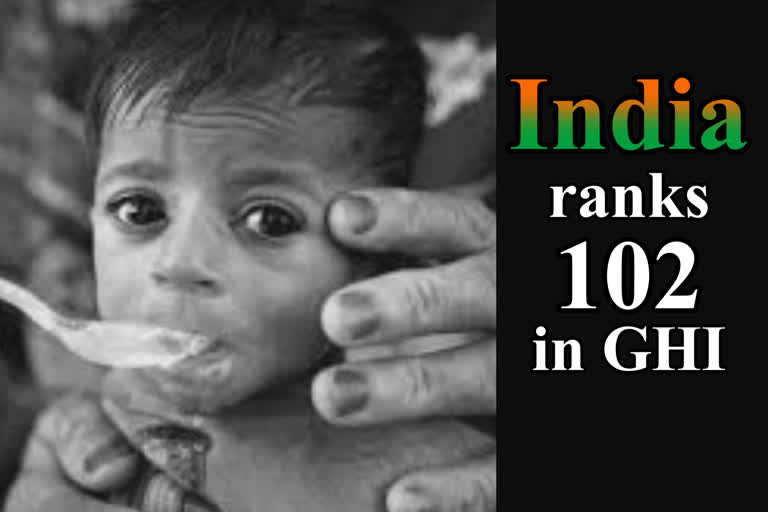Hyderabad (Telangana): In the recent annual meeting with International Monetary Fund (IMF), the World Bank said that India has halved its property rate since the 1990s. But in reality, the number of people wailing in hunger has increased over the past 3 years. On the Global Hunger Index (GHI), India has been ranked 102nd among the 117 surveyed countries. The neighbouring countries like Pakistan(94th), Bangladesh(88th), Nepal(73rd), Myanmar(69th) and Sri Lanka(66th) fared much better.
The Global Hunger Index analysis revealed that India’s growing population is the reason for the nation’s hunger pangs. If this analysis is true, it is surprising that the highest populated China is ranked at 25th in the GHI. The United Nations Food and Agriculture Organization had earlier revealed that the number of people suffering from malnutrition and lack of food security is rising.
The World Bank has warned that rampant climate changes and increasing global temperatures will lead a to 50 percent decline in food production in South Asian countries like India. It is a well-known fact that climate change and its consequences are the roadblocks to sustainable development. Food insecurity arises from a lack of increase in agricultural produce and land not being proportionately cultivated with rising population needs. Even today, 75 per cent of the rural population and 50 percent of the urban population are dependent on the government’s ration system to procure food products. Due to the chaotic supply chain system, the food security of the majority population is affected.
Though midday meals and ICDS have been brought under the same roof by formulating the National Food Security Act in 2013, the state governments showed lacklustre implementation. As a result, several issues are cropping up. With loopholes in the food grain supply, storage and management systems, three-fourths of food grains are getting damaged.
Natural calamities and environmental issues are also posing challenges to food security. Unseasonal rains are destroying standing crops, causing losses to farmers. Due to droughts, even half of the cultivable land is not getting enough water supply. As a result, agricultural lands are becoming barren. With changes in land utilization, food grain produce is badly hit. If the climate change and global warming continue this way, the livelihoods of future generations will be negatively impacted.
